Using Our Website Rank Checker
Trying to do SEO without tracking rankings is like driving with a blindfold on. Monitoring your website’s position in Google tells you if your SEO efforts are working.
Strong rankings show two important things: your content works for your audience, and your SEO strategy is effective.
Most importantly, good rankings mean more organic traffic to your website.
There are two ways to check your website rankings:
- Using SEO tools
- Checking manually
I’ll show you how to do both in this guide.
But first…
Why You Need to Track Your Website Rankings
Monitoring your website rankings is crucial for evaluating your SEO performance, measuring your online visibility, and understanding how you stack up against competitors.

By identifying which pages are driving the most traffic and which ones are underperforming, you can pinpoint areas of your SEO strategy that need improvement.
Read: 10 Best Website Rank Tracking Tools (For Agencies & Teams)
However, tracking your website rankings serves several other important purposes, including:
Spot Current and Emerging Trends
User interests and search behaviors can change dramatically over time. As a result, your website rankings may fluctuate accordingly.
You’ll need to monitor your rankings to stay ahead of these emerging patterns.
Additionally, analyzing your website rankings helps you understand the current relevance of specific topics.
If you notice that certain pages are performing exceptionally well, this suggests you should develop more content around those themes.
Conversely, if some pages are ranking poorly, you’ll need to investigate the root cause.
Common reasons for ranking declines include:
- Topic saturation — If the subject matter you’re focusing on is no longer trending or in demand, people may have stopped actively searching for it. For instance, imagine you run a tech review site, and you’ve been focusing on “iPhone 14 reviews”. While this drives lots of traffic when the phone launches, interest naturally declines as newer models are released. This results in fewer people searching for iPhone 14 content, leading to lower rankings.
- Seasonal variations: Some topics experience natural popularity shifts based on time of year or seasons. For example, content about “beach destinations” or “winter coats” will naturally see fluctuations in search volume as seasons change, affecting their rankings.
Monitor Competition
When you track your website rankings, you can identify which competitors are ranking for the same terms you’re targeting. This provides valuable insights into the competitive landscape within the search results.

If you discover that many established and authoritative websites are competing for the same terms you’re targeting, ranking for those terms may be particularly challenging.
Comparing your rankings against competitors allows you to benchmark your performance. You can see where you stand and make strategic adjustments to improve your position and overall SEO approach.
Measure Return on Investment
Website rankings correlate directly with organic traffic, conversions, and revenue. By analyzing your rankings alongside your conversion and traffic data, you can determine which pages are performing well and which need optimization.
This gives you a complete picture of whether you’re getting a good return on investment (ROI) from your SEO efforts.
Optimize Content Strategy
Tracking your website rankings enables you to identify which pages are thriving and which are struggling. If certain pages are ranking poorly, it may be due to content quality issues.
In such cases, you’ll need to conduct a thorough content audit to identify areas for improvement. When analyzing your content, focus on:
Content Quality
Thin or low-quality content can hurt your chances of ranking well. Ensure your content is well-researched, comprehensive, and provides genuine value to your readers.
Additionally, avoid keyword stuffing. This will diminish your content quality and drive visitors away.
Your goal should be to create content so engaging that visitors stay on your page longer. This reduces bounce rate, which is one of many user experience signals Google uses to evaluate page quality.
If your page has a high bounce rate, this sends a negative signal to Google and may result in lower rankings for that page.
User Intent & Search Relevance
To rank well, your content must align perfectly with user search intent. If your content doesn’t directly address what users are searching for, search engines won’t consider it relevant.
Based on the query, search engines can typically determine the intent behind a search and match it with appropriate results.
Remember, it’s not just about the terms you target, but how well your content satisfies the user’s query.
For example, consider someone searching for “best gaming laptops”. This query indicates they’re looking for comprehensive reviews, specifications, and recommendations for gaming laptops.
However, if your page targeting “best gaming laptops” only contains basic computer information and coding tips, there’s a significant mismatch between user intent and content. This would lead to a poor user experience.
Users would likely leave quickly and look elsewhere for information.
To determine search intent for any query, there are four main categories:
- Informational
- Navigational
- Transactional
- Commercial
Some queries are easy to categorize. For instance, searches beginning with “how to” are typically informational, while those starting with “buy” are usually transactional.
However, sometimes determining intent can be more challenging. In these cases, we recommend using Semrush’s Keyword Overview tool to understand the intent behind any search term.
Here’s how to use it. Select “Keyword Overview” from the main menu:

Then enter your search term. For example, “paleo diet”:

After clicking “Search”, you’ll see an overview including search intent:

As shown, Semrush indicates this is an informational query. This means users want to learn about healthy diets, how they work, and how to follow them.
Local and International SEO
Local Rankings
Local SEO focuses on monitoring your visibility to customers in your geographic area.
Here’s why tracking local rankings matters:
- Local visibility — Tracking ensures your business appears for relevant local searches. When someone in your area searches for your products or services, you want to rank highly to increase the likelihood they’ll choose your business over competitors.
- Local competition — Monitoring local rankings provides insights into your competition, including who they are, what terms they target, and how you compare.
- Performance measurement — Tracking shows how effective your local SEO efforts are. Without monitoring, it’s difficult to know what’s working. The insights help identify which local terms drive the most traffic and conversions.
International SEO
International SEO involves monitoring your visibility to global audiences.
If your website serves multiple regions, tracking rankings in each location becomes crucial. This ensures you’re effectively targeting appropriate terms and optimizing content for each unique audience.
Additionally, rank tracking provides valuable insights into competition levels and potential success in target markets.
Responding to Algorithm Updates
Your rankings will experience minor daily fluctuations. However, sometimes you’ll notice significant drops or increases. In these cases, Google likely implemented a major algorithm update.
Google updates its algorithm over 500 times annually. Some days see multiple updates.
However, not every update will affect your rankings. You need a tool to alert you when your rankings have been significantly impacted.
SEMrush offers a tool called Sensor that tracks Google updates on your behalf. It compares updates against your website and provides a volatility score.
This 1-10 score indicates how volatile your site is to Google’s frequent updates.
If your score is high, analyze your rankings to identify any significant losses.
To set this up, select “Sensor” from the left menu:
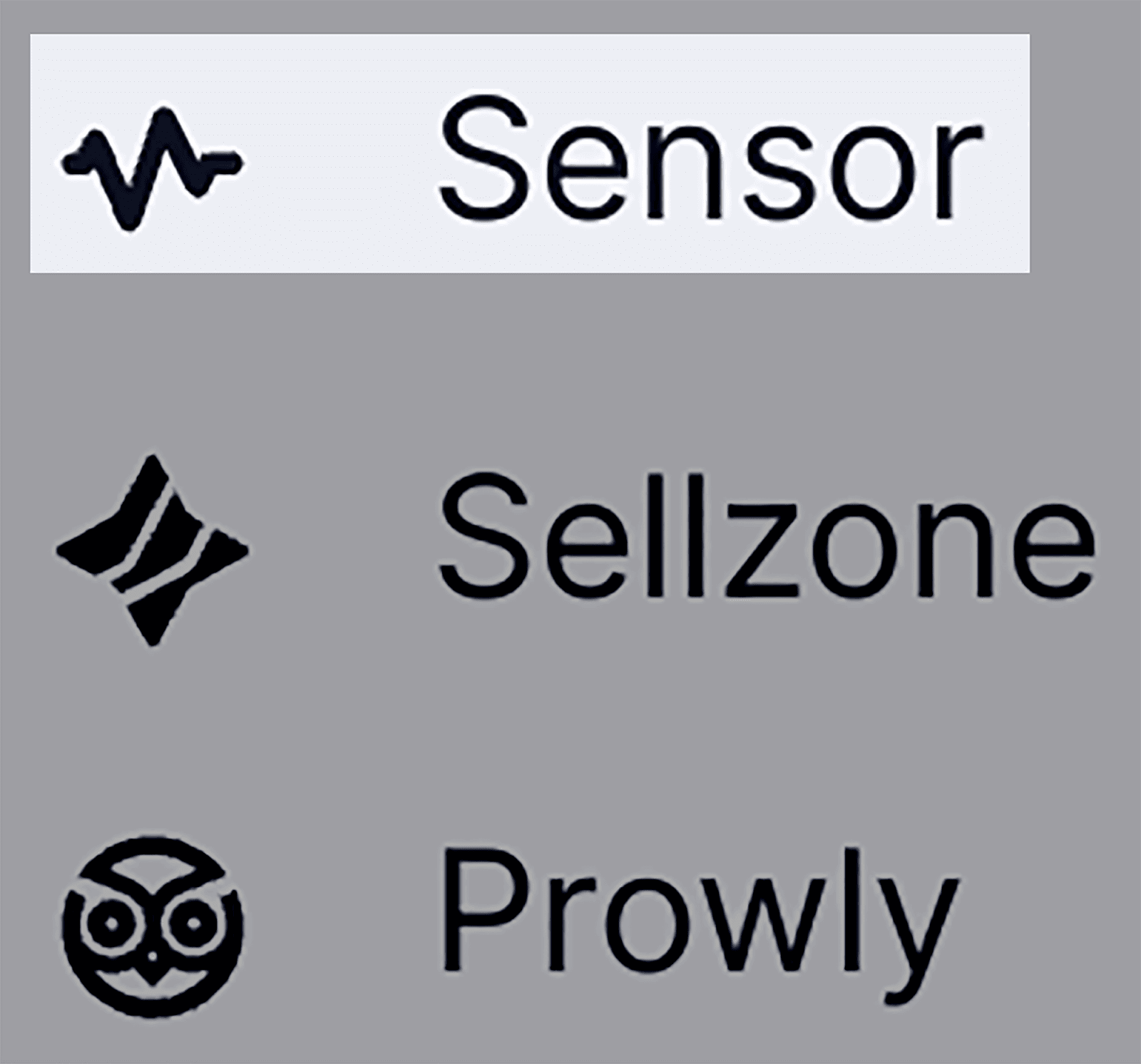
Once your domain is configured in Sensor, you’ll see this dashboard:
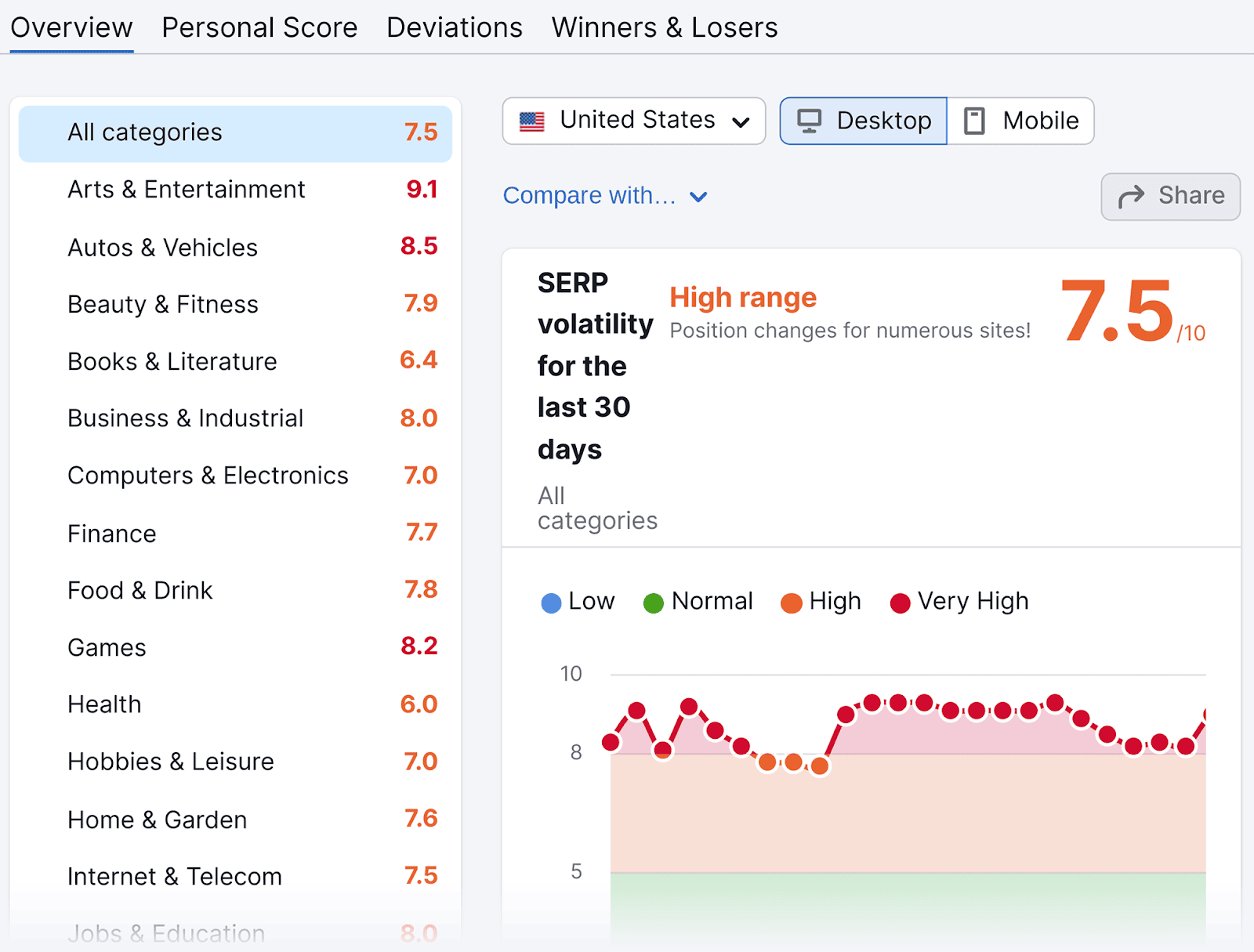
Click “Personal Score”:
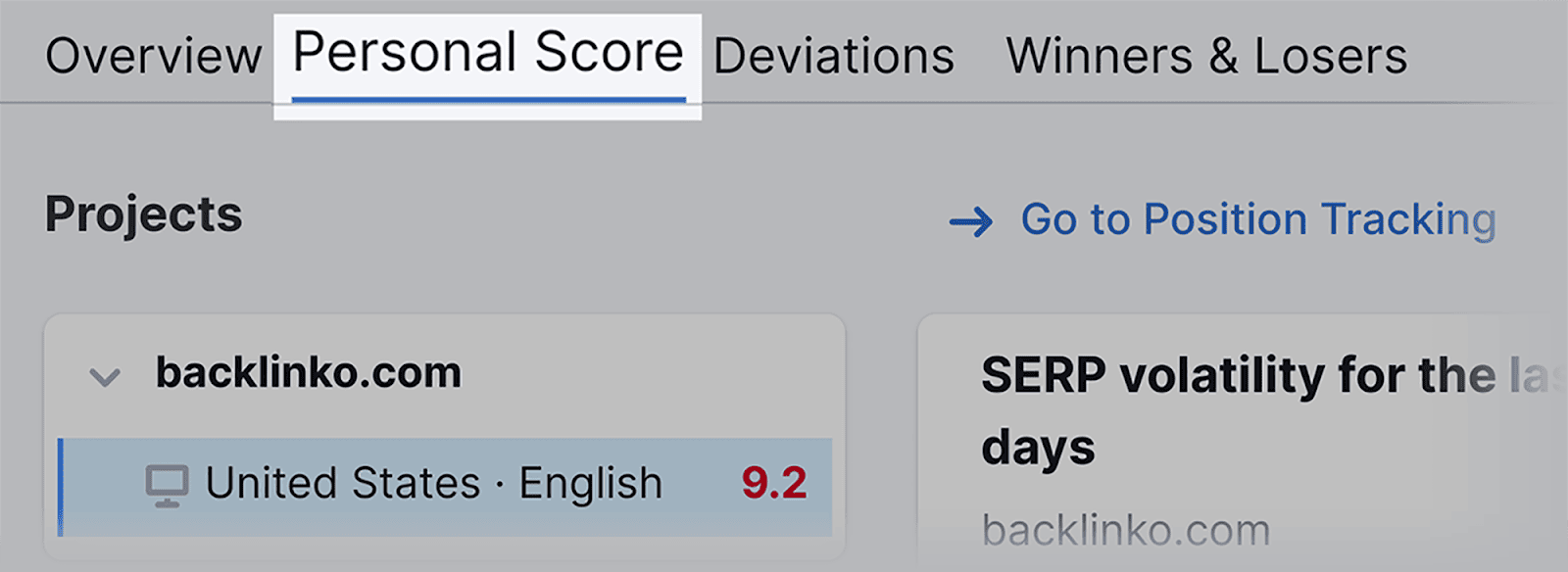
Select your domain from “Projects”. You can then review your domain’s volatility over 30 days:
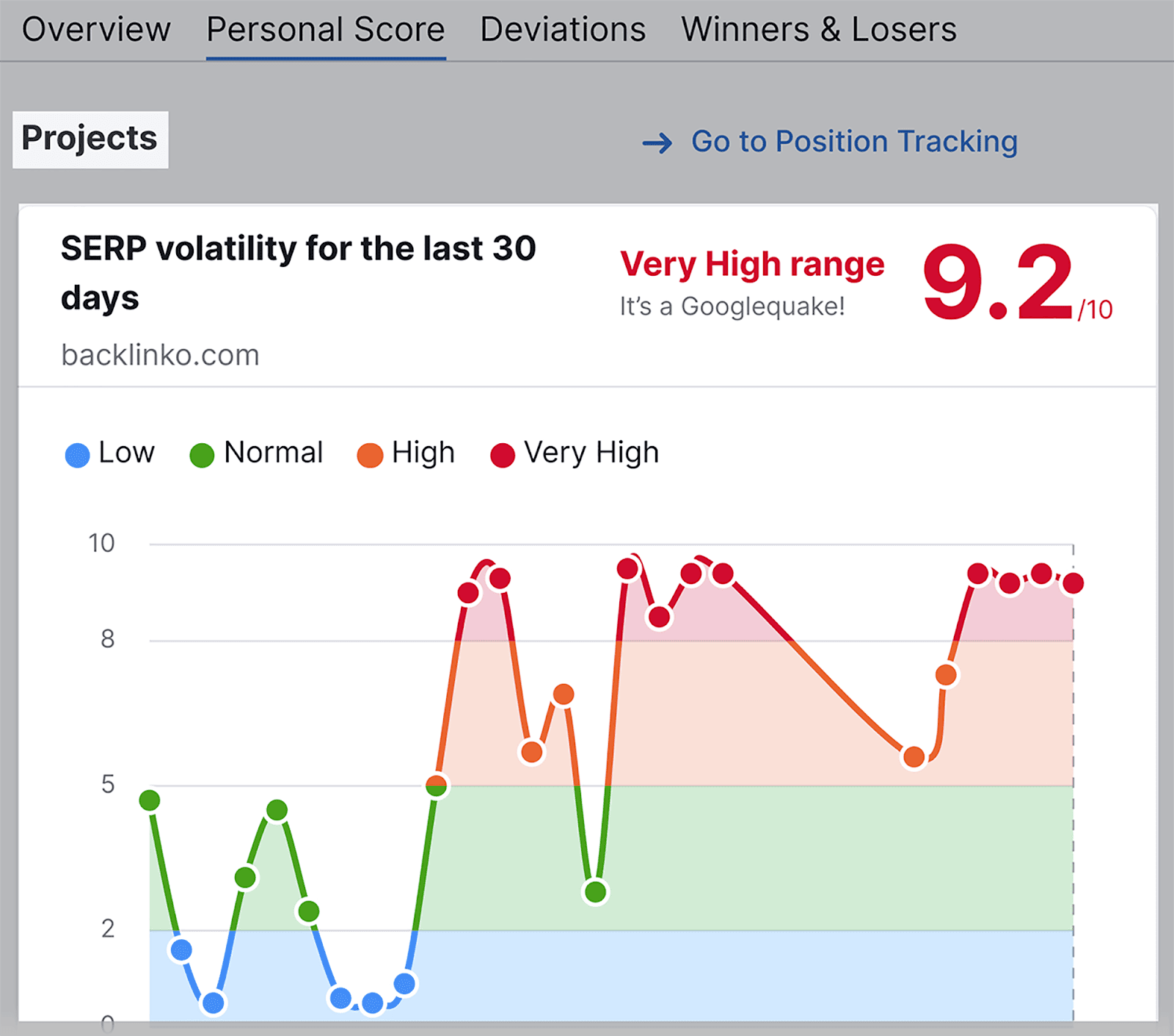
A low volatility score (like 0.5) indicates your rankings are relatively stable.
How to Check Your Website Rankings
For checking your website’s Google rankings, I recommend two main methods: using SEO tools like Google Search Console and Semrush, or checking manually.
Manual Checking Method
Let’s start with the most straightforward approach – manual checking.
This involves analyzing search results yourself to determine where your pages rank.
However, despite its apparent simplicity, many people perform manual checks incorrectly.
You might think you just need to search Google for your target term. For example, here’s what appears when searching “what is SEO”:
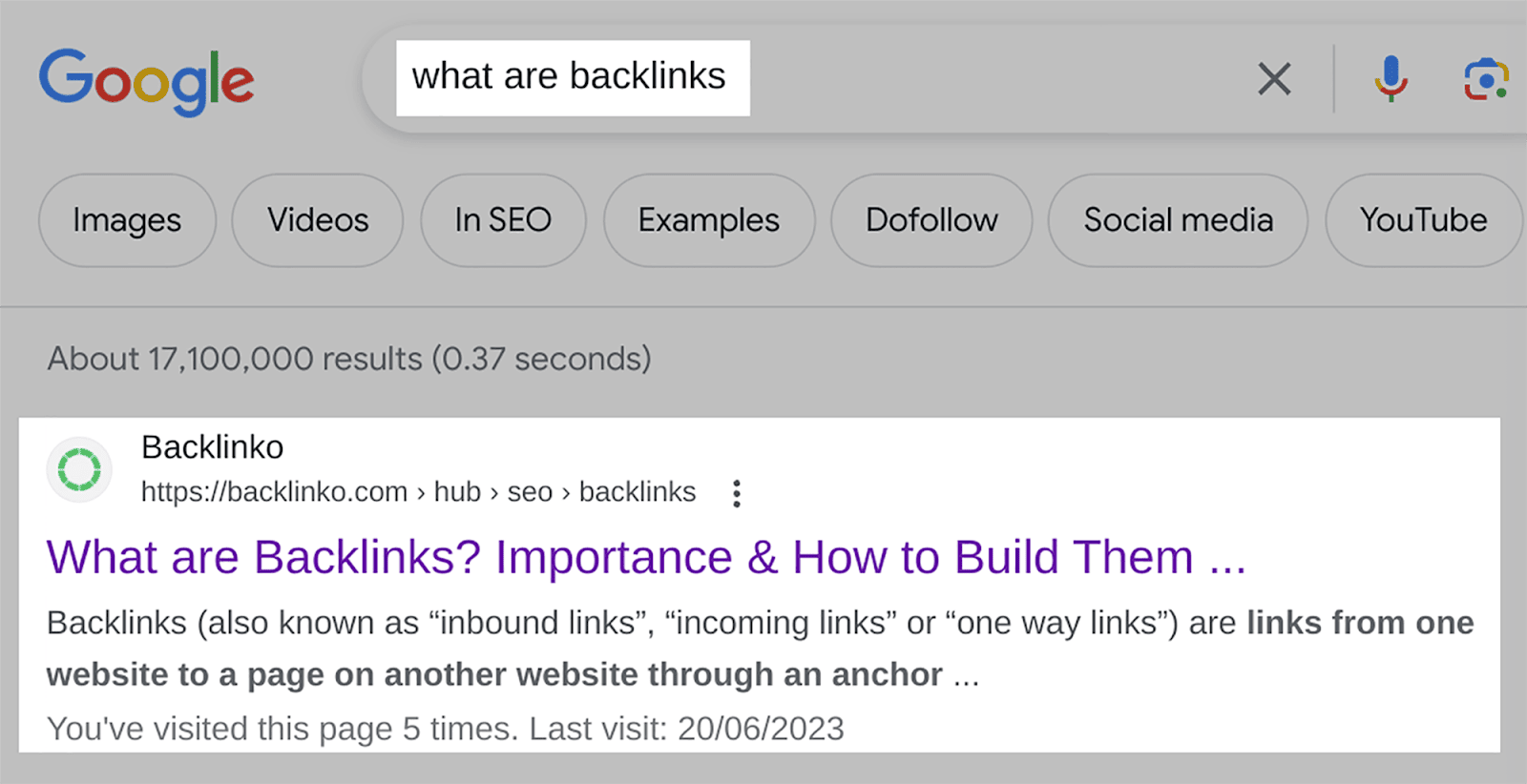
While this seems to show your current ranking, is it really accurate?
These results provide some insight, but they may not reflect what average users see.
Here’s Google’s explanation for why search results vary between users:
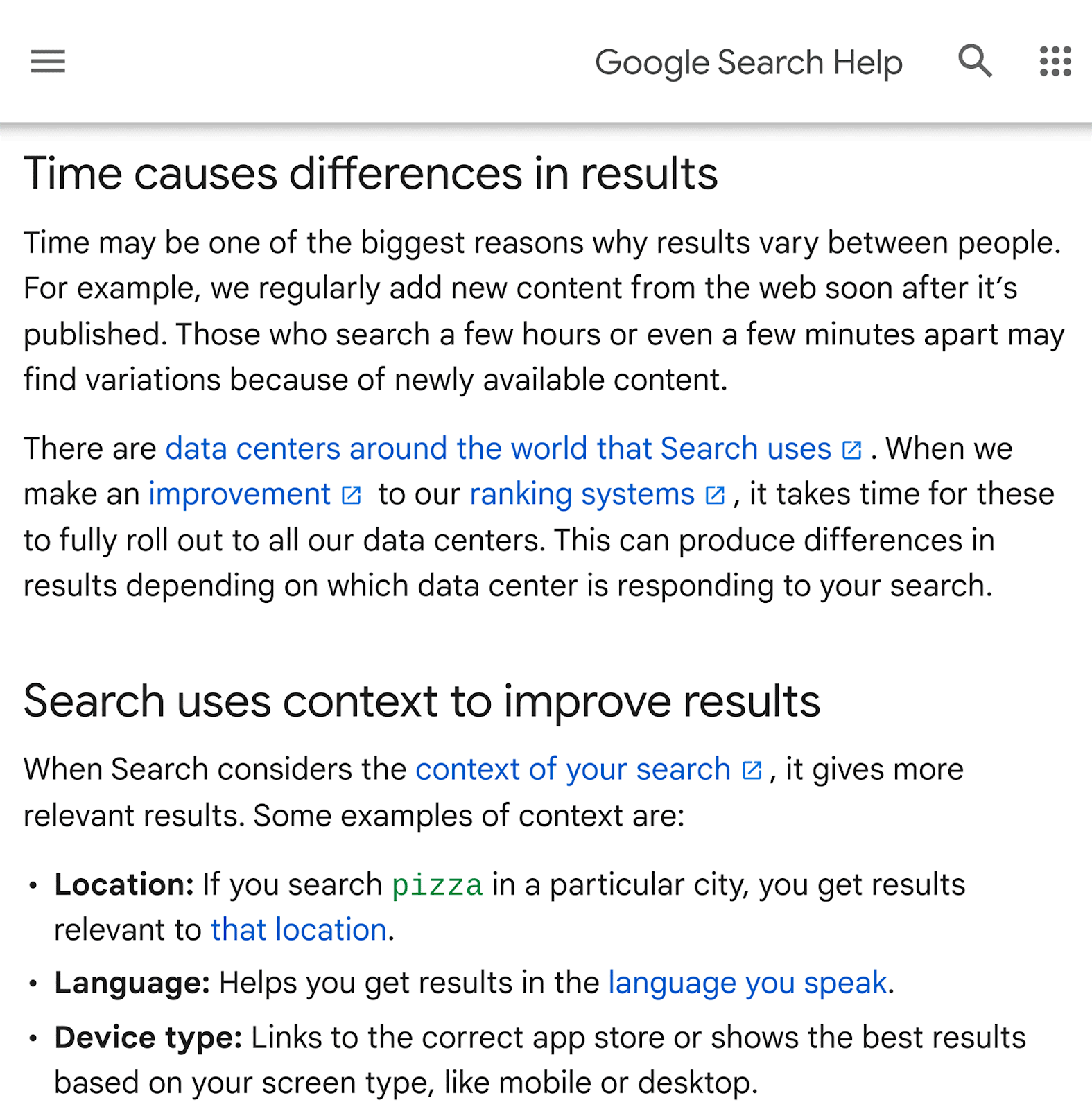
While location, time, language, and device type directly impact results, they’re also affected by search history.
To view results most objectively (unaffected by search history), perform searches in private browsing mode.
First, open an “Incognito” or “Private” window.
Then search for your target term.
For example, searching for “backlinks”:
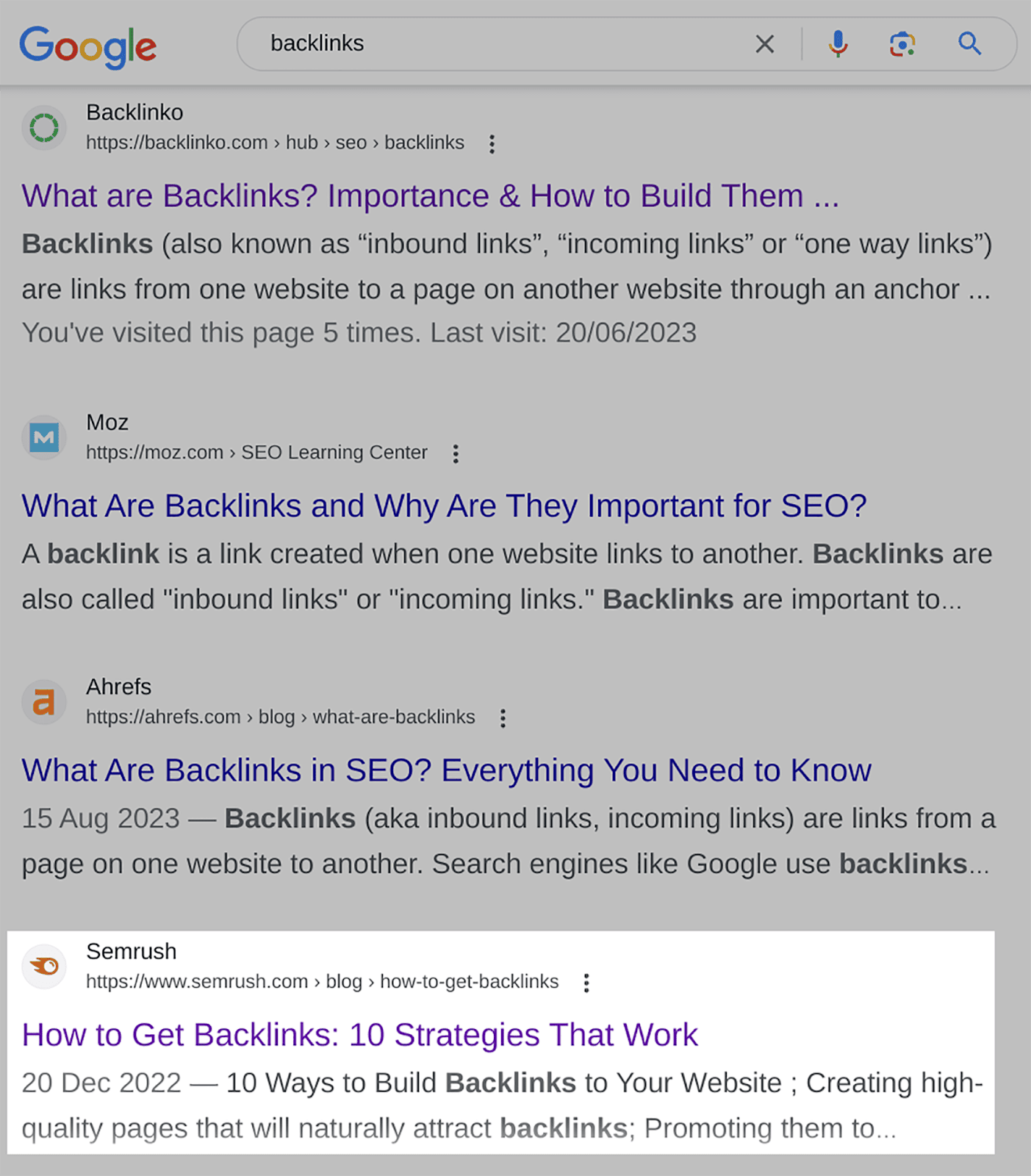
This shows true rankings since we’re searching in incognito mode.
Now compare results in regular browsing mode:
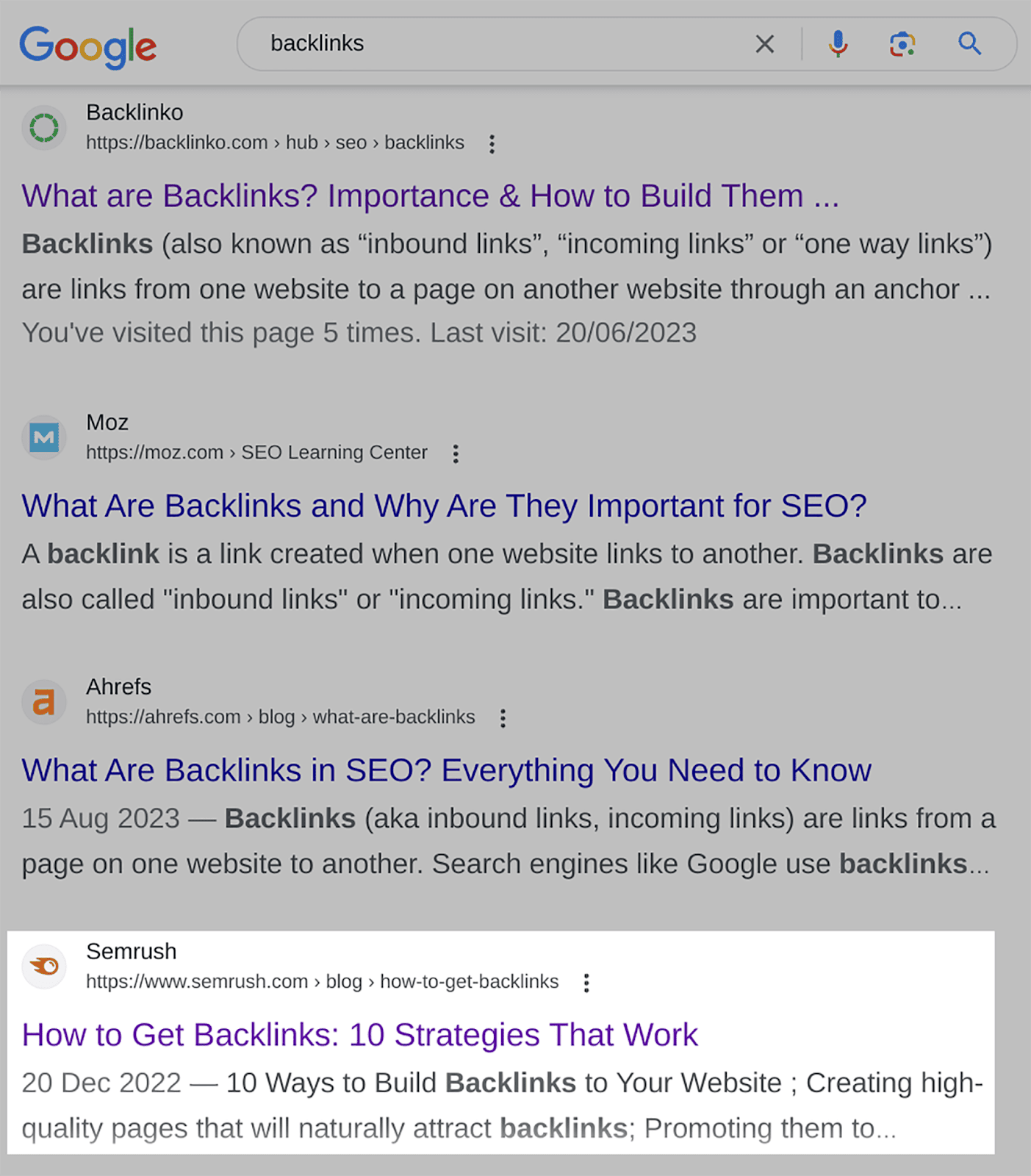
You may notice significant differences in positions. Or results might be similar. Either way, incognito mode provides clearer ranking data.
This happens because Google doesn’t track search history in incognito mode, so results aren’t personalized.
Therefore, always use incognito mode for manual rank checking.
However, I don’t recommend manual checking as your primary method.
For new sites with few target terms, manual checking works fine. But for larger sites with hundreds of terms, manual checking becomes too time-consuming.
For more efficient and accurate tracking, I recommend using Google Search Console (if budget-constrained) or Semrush.
Using Google Search Console for Rank Tracking
Google Search Console (GSC) offers faster tracking than manual checking.
If you can’t afford paid SEO tools, GSC provides free rank tracking.
You’ll need to set up your site first. See our guide on getting started with GSC if needed. After setup, wait about 30 days for sufficient data.
Once you have enough data, click “Search results” under “Performance”:
[Image: Screenshot showing GSC Performance section]
Select “Average position”:
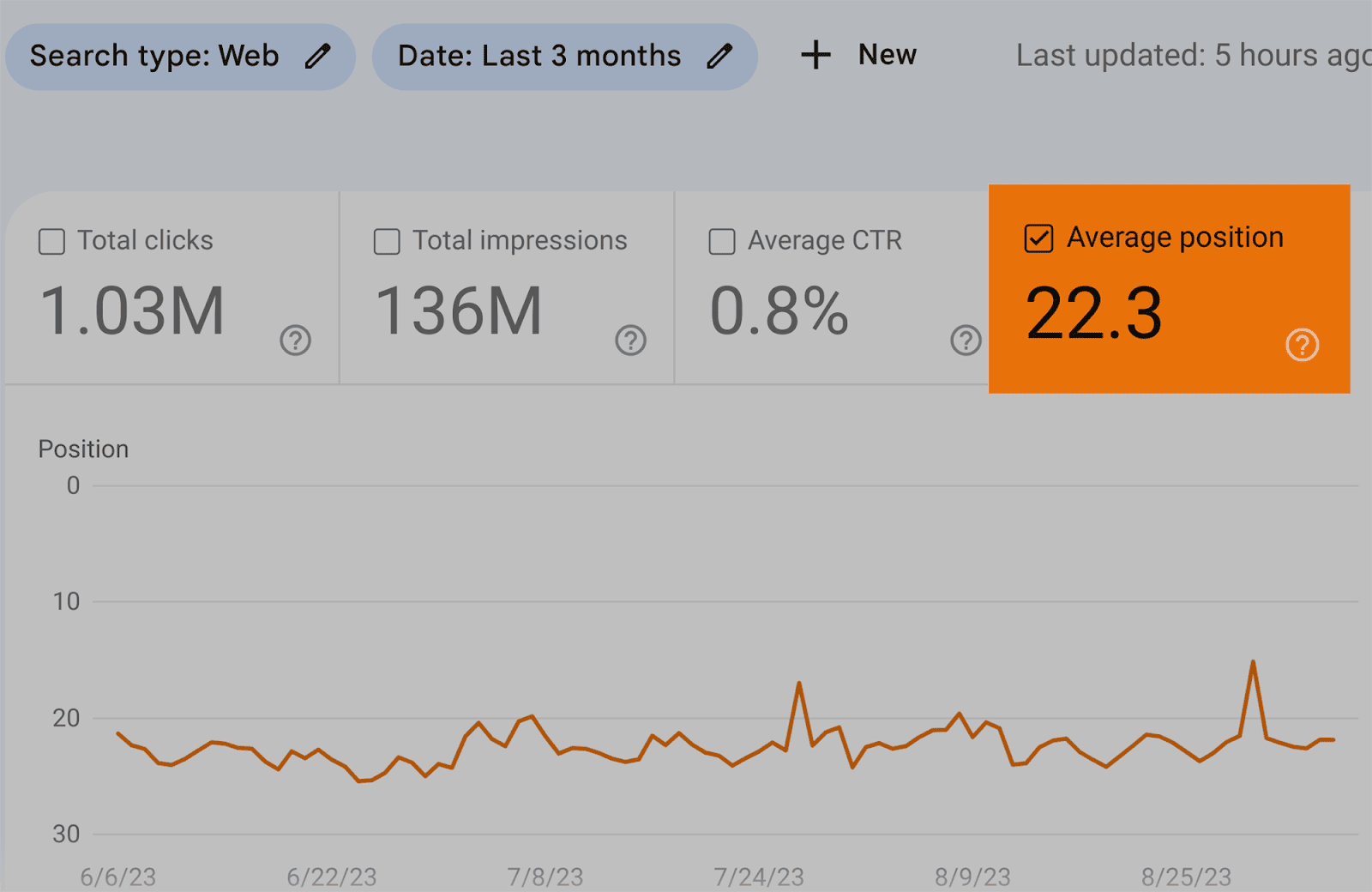
This shows roughly where your pages appeared for specific terms during your chosen timeframe.
Scroll down to see a data table preset to “Queries”, showing terms you rank for and average positions:
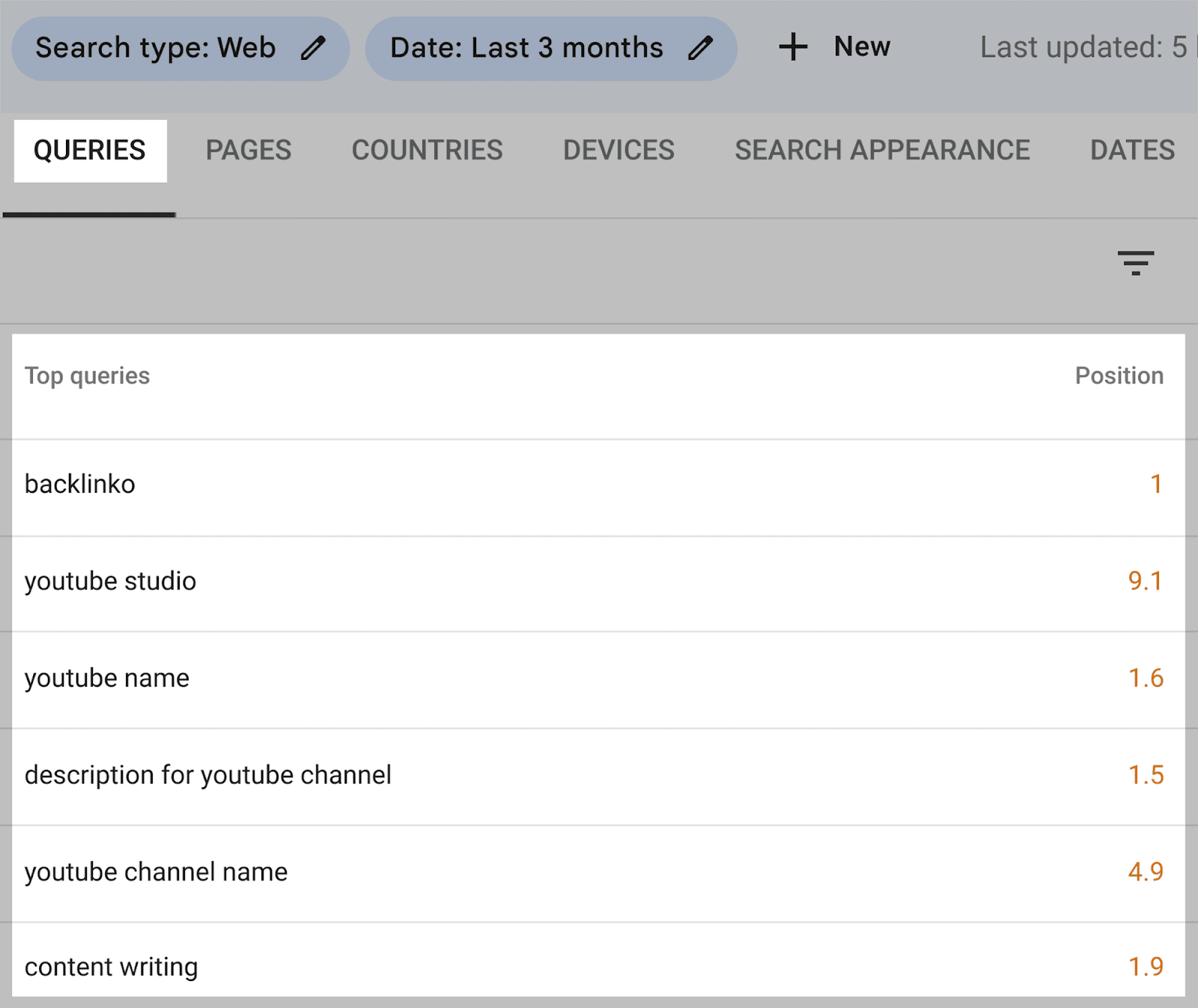
Click any term, like “content writing”:
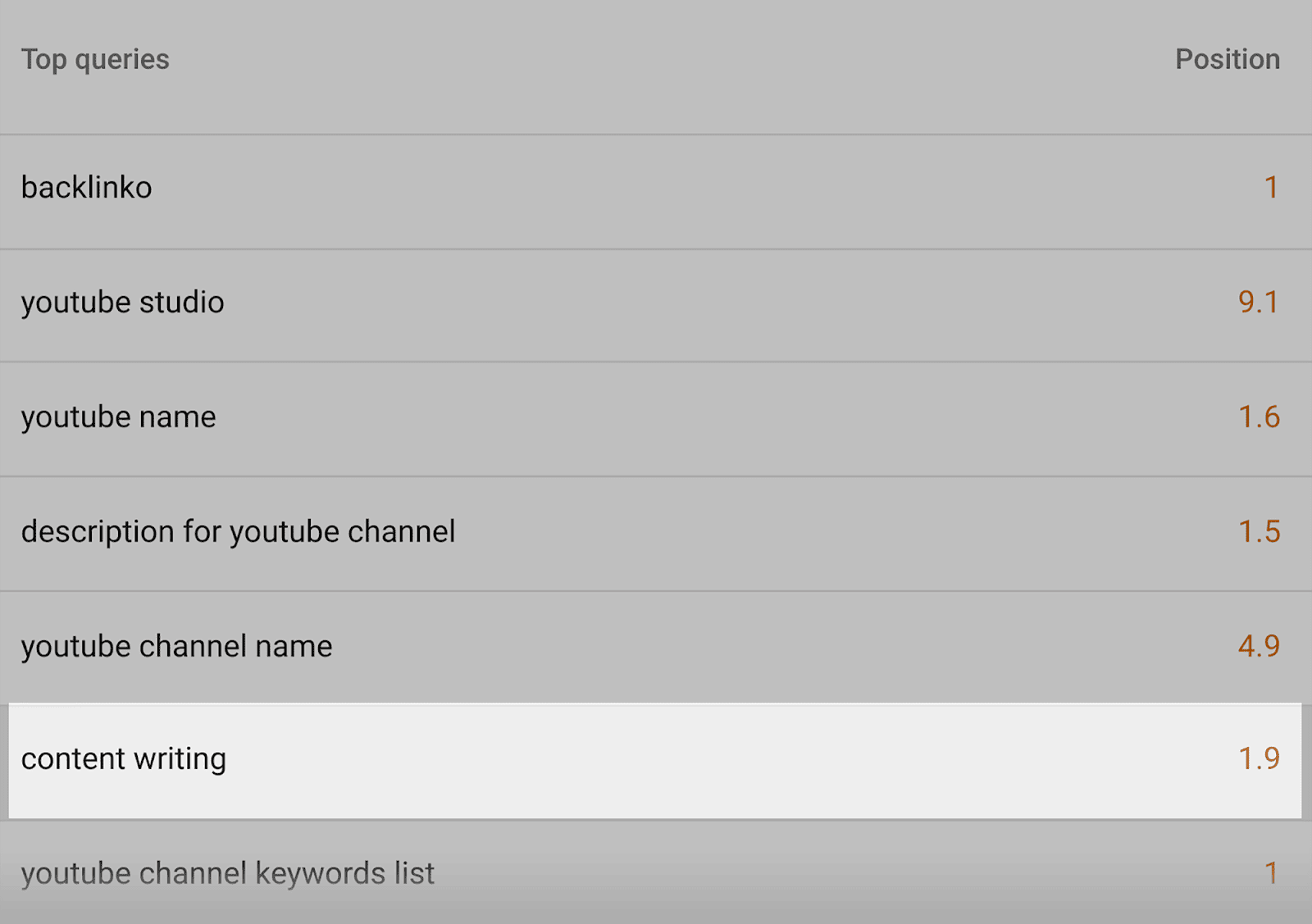
The graph will display ranking history over three months.

To adjust dates, click “Date: Last 3 months”:
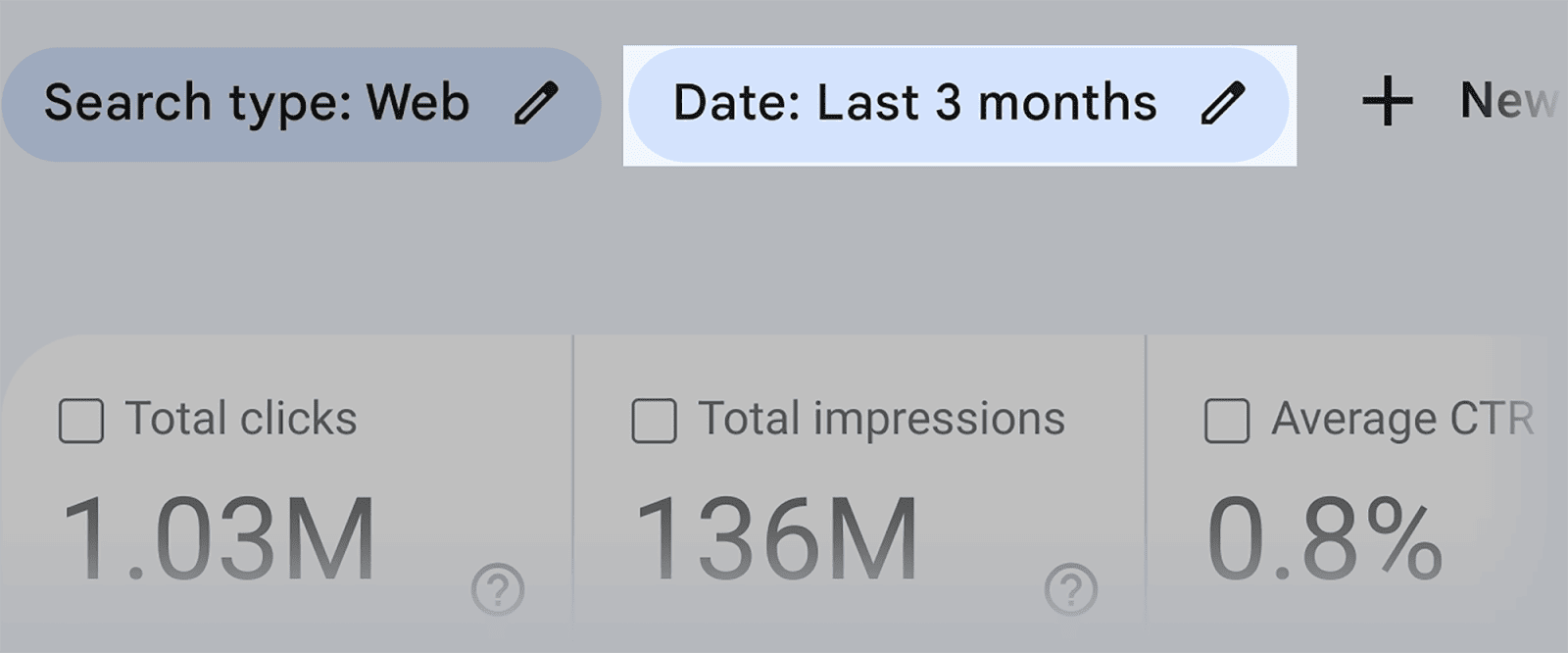
This provides several timeframe options:

The “Compare” tab lets you compare rankings with previous periods. For example, comparing last 3 months vs. previous 3 months:

After applying, you can compare both periods. This clearly shows ranking improvements or declines.

Export reports easily using the “Export” button:

While GSC is efficient and free, it has limitations.
It only tracks terms it discovers naturally. You can’t set up tracking for specific terms. However, Semrush’s Position Tracking tool offers this capability.
Using Semrush for Rank Tracking
Semrush provides multiple ways to track website rankings.
Position Tracking lets you monitor specific terms and receive regular ranking updates.
Select Position Tracking:
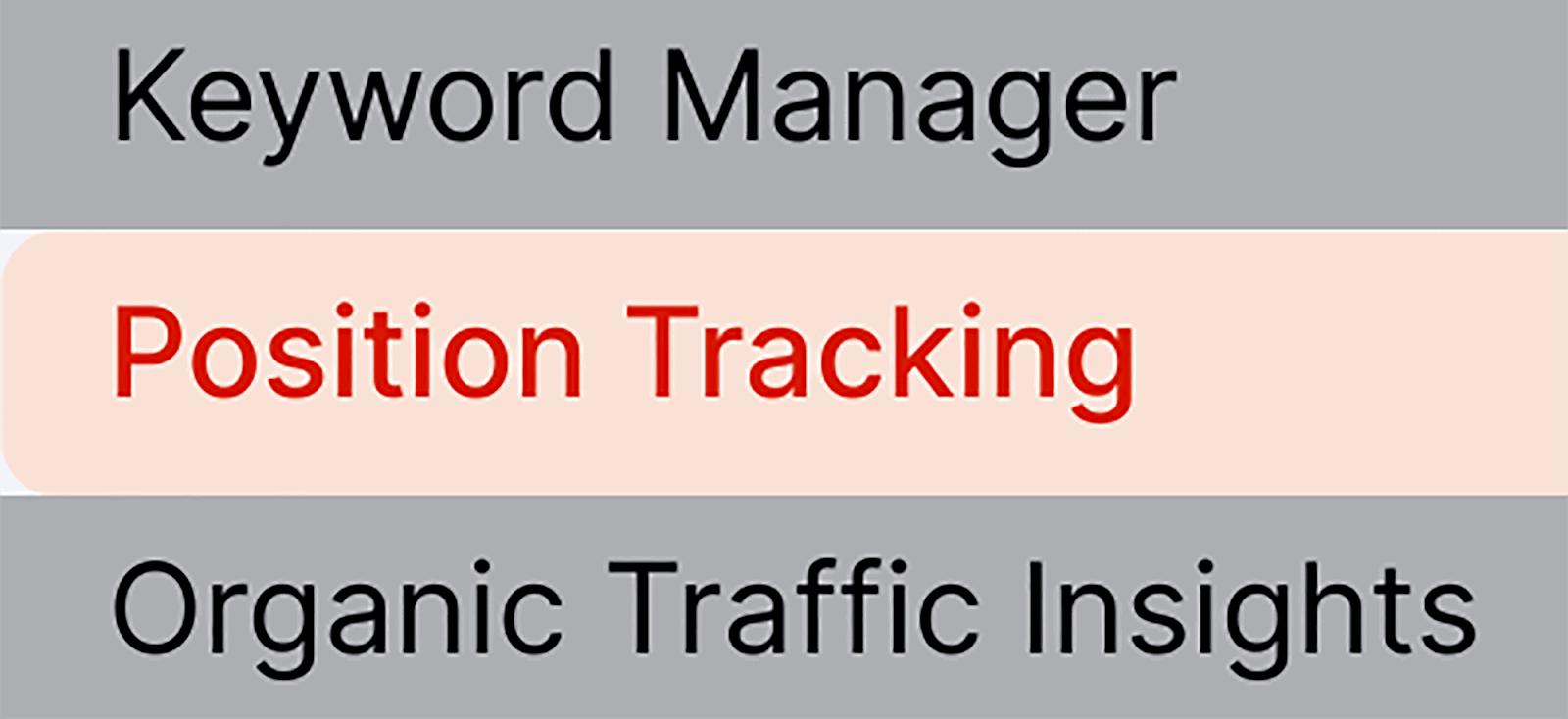
Enter your domain and click “Set up tracking”:
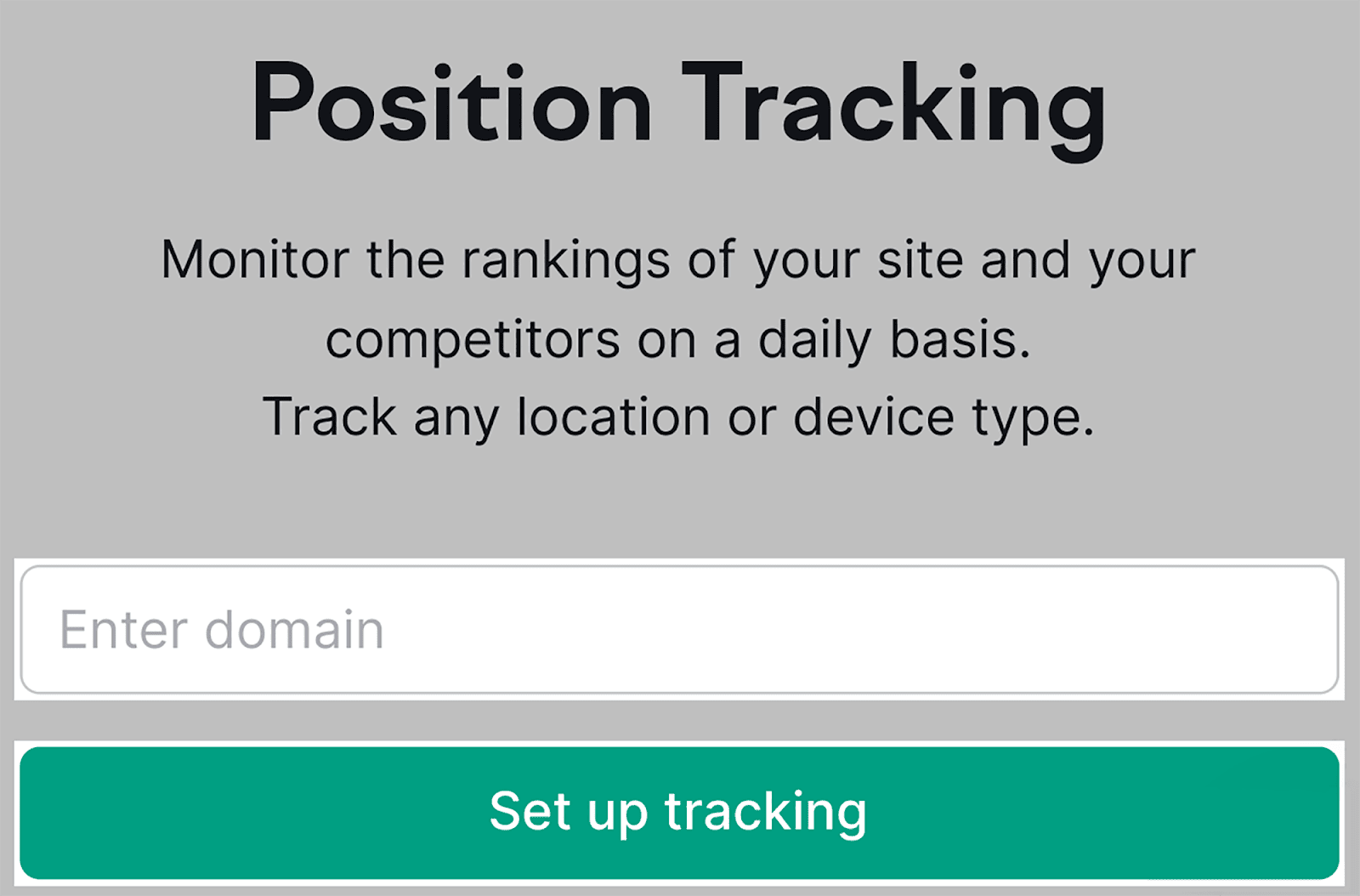
Under “Targeting”, select search engine, device and location:

Click “Continue to Keywords” at the bottom.
Enter terms to track and click “Add keywords to campaign”:

Added terms appear under “Added to campaign”:
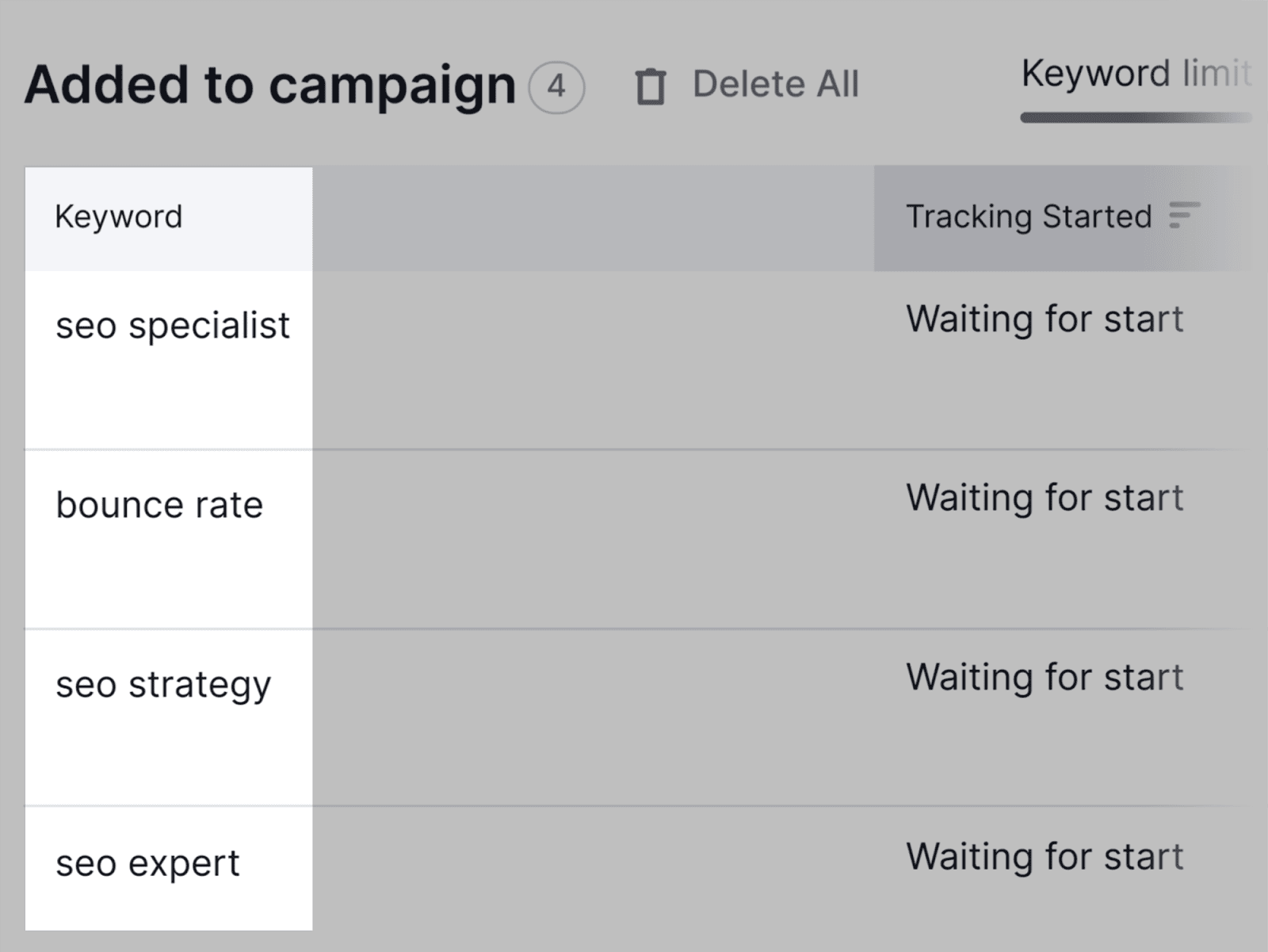
Enable “Send me weekly ranking updates via email” for automated reports.

This will keep you in the loop of any changes to your ranking positions.
Once you’re done, click “Start Tracking”.
On the next page, click on the “Overview” tab:

Next, scroll down to the bottom of the page, where you’ll see data about the keywords you’ve selected to track:
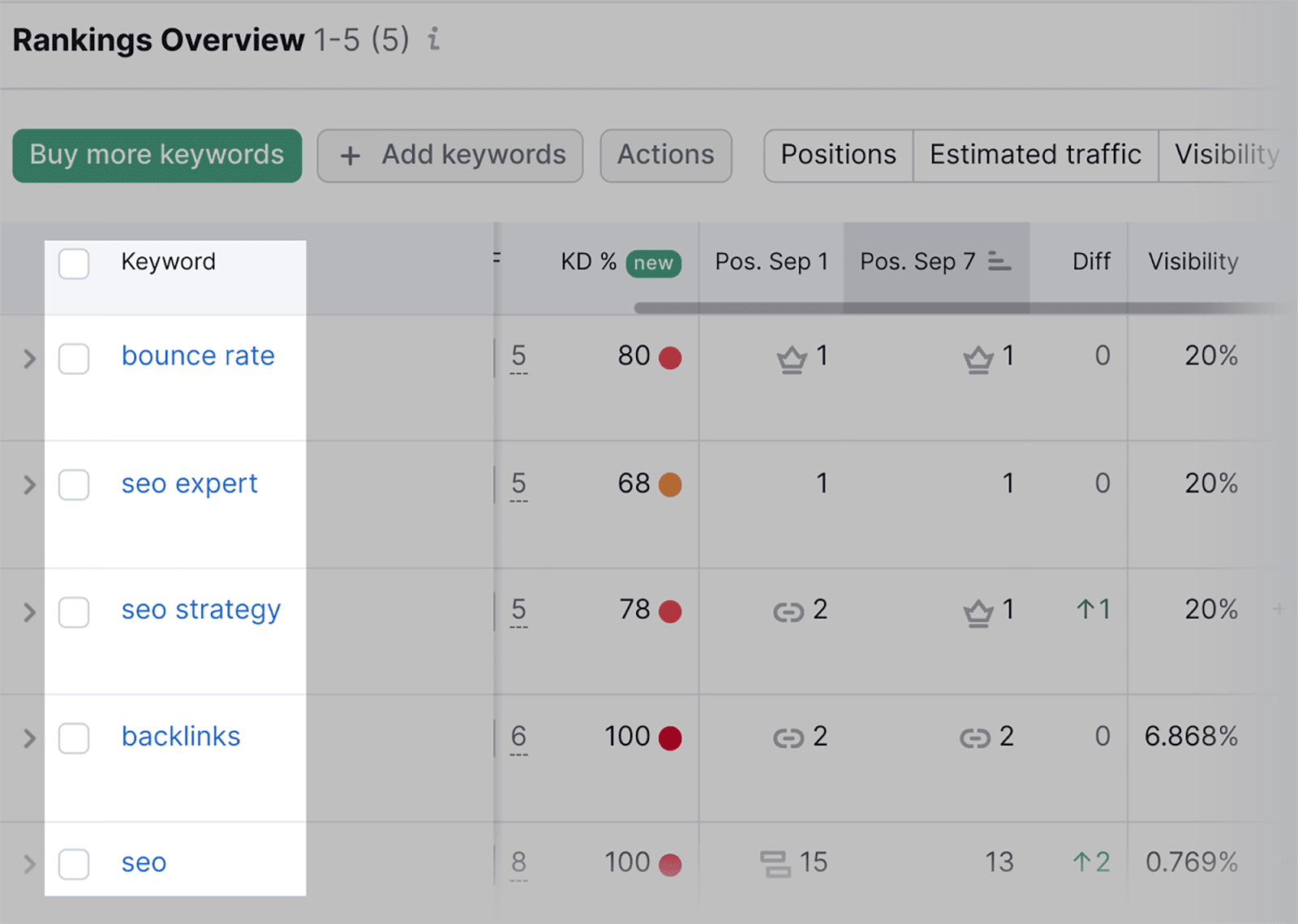
This includes their current position compared to their ranking from one week ago:
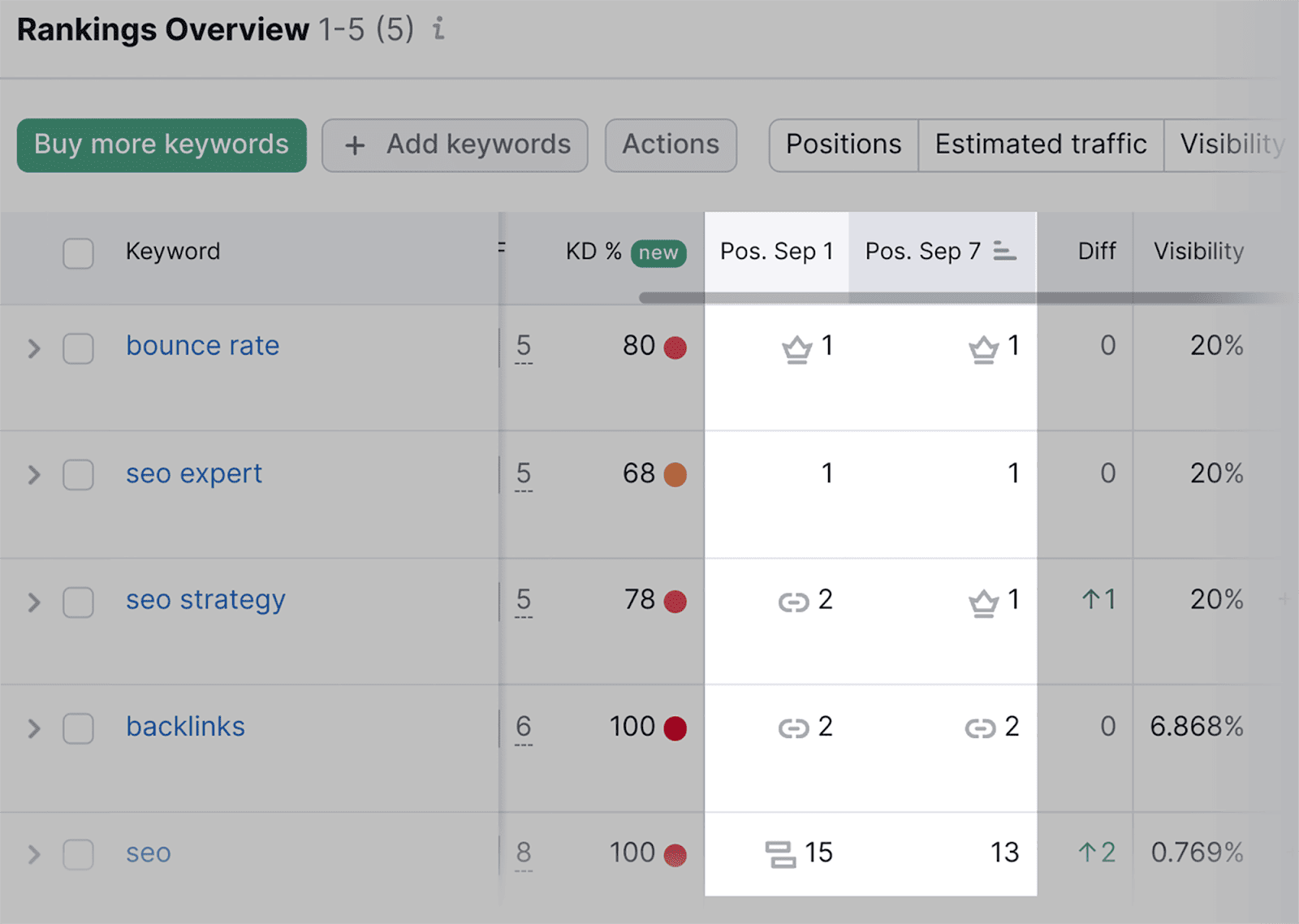
Within the “Diff” column, you can see the changes in your positions for each keyword:
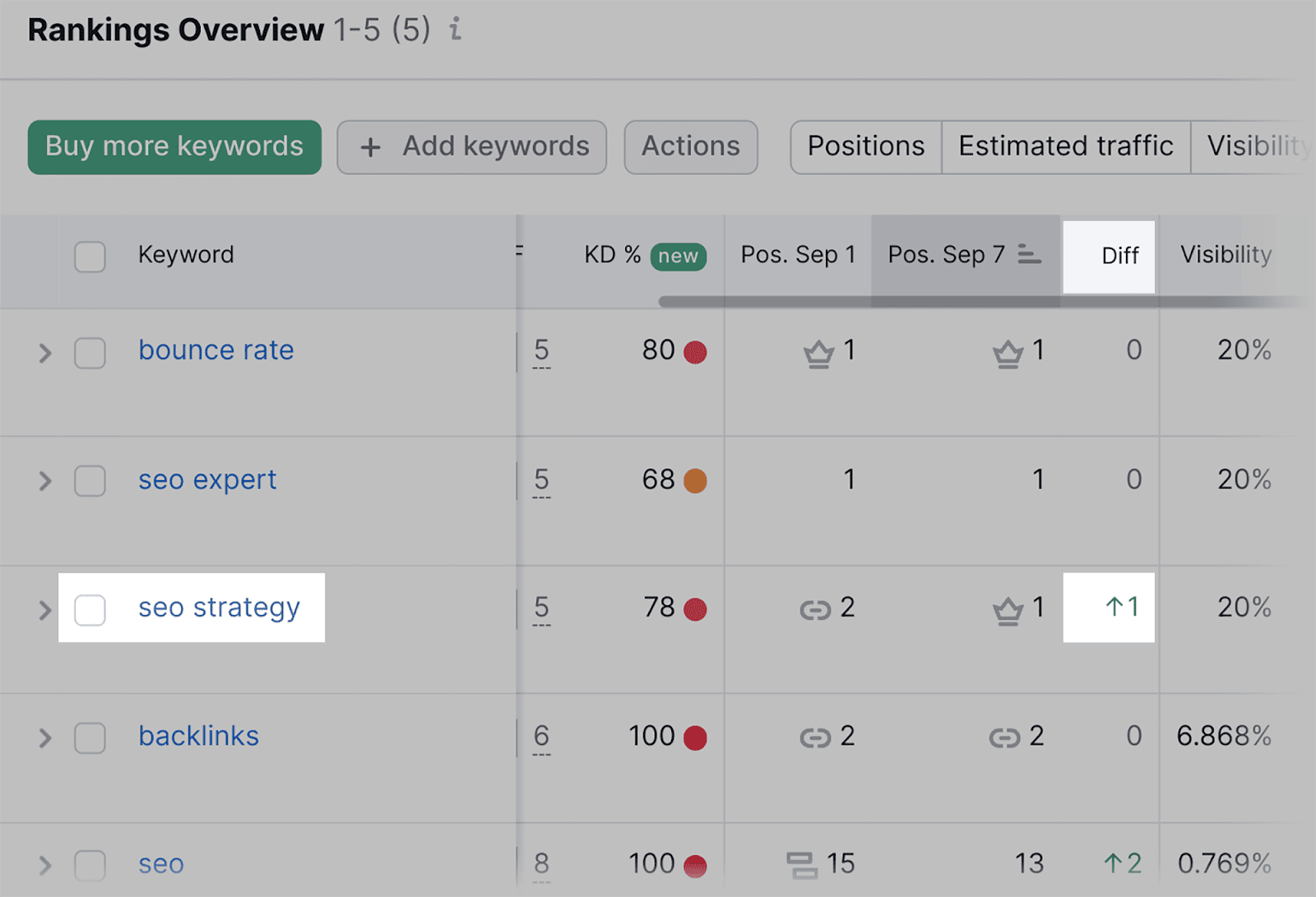
For example, we can see that I’ve gone up 1 position for the keyword “seo strategy”.
How Often Should You Track Your Website Rankings?
Like most SEO tasks, you need to track your keywords periodically.
However, the frequency in which you should track your keywords depends entirely on your industry, the competitors you’re up against, and the amount of time and resources you must dedicate to keyword tracking.
To give you a rough idea of how frequently you should carry out tracking, here are my recommendations for different business types:
Monthly tracking
If your keywords are generally stable and if your competition levels aren’t too high, then conducting monthly keyword tracking is recommended. Monthly tracking is the bare minimum you can do. So, if you don’t have much time or resources, try and at least check your rankings once a month.
Bi-weekly
If you’ve just launched a new SEO campaign, you’ll probably naturally be checking your rankings frequently. Checking on a bi-weekly basis should allow you to keep up-to-date with minor changes while giving you enough time to focus on other SEO tasks.
Weekly tracking
I’d recommend tracking your keywords on a weekly basis if you’re in a highly competitive industry. As in, if your rankings naturally fluctuate on a regular basis. Tracking this frequently will allow you to catch fluctuations before they get out of hand. By identifying these ranking changes, you can make adjustments to your content to overcome them.
Daily tracking
We only recommend daily tracking for the following reasons: if you’ve recently encountered a Google penalty or are actively working on recovery, or if Google has recently rolled out a major algorithm update. Daily tracking can provide crucial insights into their impact on your rankings.
